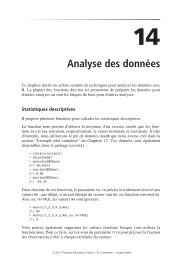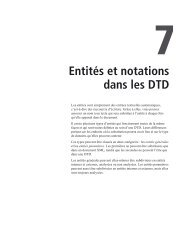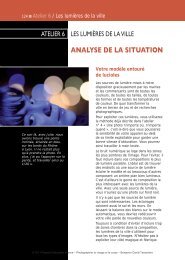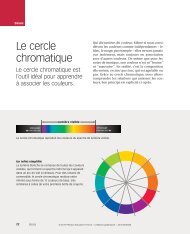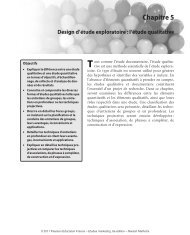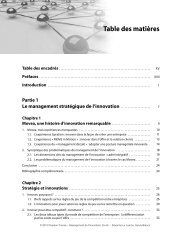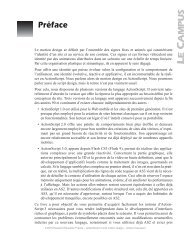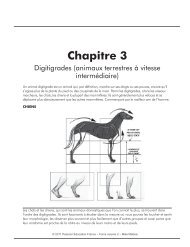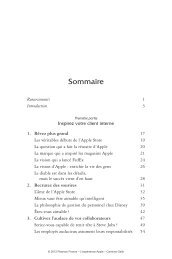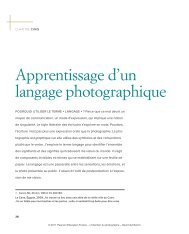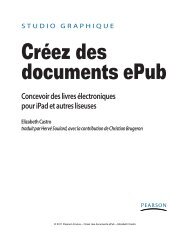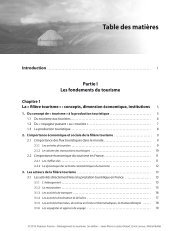Corrigés des exercices - Pearson
Corrigés des exercices - Pearson
Corrigés des exercices - Pearson
- No tags were found...
You also want an ePaper? Increase the reach of your titles
YUMPU automatically turns print PDFs into web optimized ePapers that Google loves.
Fig. 3.6 : Recherche du lambda optimal.E [h t ] = σ 2 pour tout t, on a σ 2 = c + aσ 2 + bσ 2 , soit encore :σ 2 =c1 − a − b ,pourvu que 1 − a − b soit différent de 0. Mais a-t-on pour autant 1 − a − b < 1 ? En fait, ilfaut revenir à la définition. On a :E [h t ] = c + (a + b) E [h t−1 ]et, en remplaçant E [h t−1 ] par sa définition, on trouve :E [h t ] = c + (a + b) {c + (a + b) E [h t−2 ]}= c [1 + (a + b)] + (a + b) 2 E [h t−2 ] .[En renouvelant le principe, on trouve E [h t ] = c 1 + (a + b) + (a + b) 2] +(a + b) 3 E [h t−3 ],soit encore, pour l’ordre N :N−1∑E [h t ] = c (a + b) i + (a + b) N E [h t−N ] .i=0On reconnaît, dans le premier membre, une somme de termes géométriques. On a alors :1 − (a + b)NE [h t ] = c1 − (a + b) + (a + b)N E [h t−N ] .44Lorsque N → ∞, cette somme ne sera finie que si (a + b) < 1 et on aura :E [h t ] =c1 − (a + b) .© 2010 <strong>Pearson</strong> France – Synthex Finance de marché – Franck Moraux



